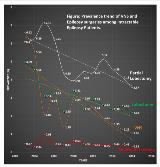A Comparison of Cost of Care of Surgical Treatments of Intractable Epilepsy Including Vagal Nerve Stimulator
Abstract number :
1.361
Submission category :
9. Surgery / 9C. All Ages
Year :
2018
Submission ID :
501314
Source :
www.aesnet.org
Presentation date :
12/1/2018 6:00:00 PM
Published date :
Nov 5, 2018, 18:00 PM
Authors :
Urvish Patel, Creighton University School of Medicine; RamMohan Sankaraneni, Creighton University School of Medicine; and Sanjay Singh, Creighton University School of Medicine
Rationale: 30 to 35% of epilepsy is intractable and thus these intractable epilepsy (IrE) patients are candidates for resective Epilepsy Surgery or Vagal Nerve Stimulator (VNS) implantation. It is therefore important to determine, in a large cohort, the cost of this care in an inpatient setting, both in terms of monetary cost and length of stay (LOS). This information is particularly important in this era of population health and should also be used in patient counselling. The Epilepsy surgeries were designated as per there codes [Hemispherectomy (H), Lobectomy (L), and Partial Lobectomy (PL)]. This study represents a unique effort in this direction. Methods: We performed a population-based analysis of the Nationwide Inpatient Sample (years 2003-2014) in all (pediatric and adult) hospitalizations for epilepsy to determine IrE cohort, using ICD-9-CM codes. We aimed to determine the following: Prevalence of IrE, Prevalence and Utilization trends of various surgical epilepsy treatment modalities, Mean Cost of Hospitalization and LOS associated with treatment, Prevalence and Trends of prolonged length of stay (pLOS >13 days) and higher cost (hCOST > $153,910) among VNS and epilepsy surgeries, Predictors of pLOS and hCOST among IrE hospitalizations. pLOS and hCOST were calculated by using 95 percentile (> +1.5 SD) value of total LOS and total Cost respectively. Calculated prolonged length of stay was (pLOS) >13 days and higher cost was (hCOST) = >$153,910. We performed weighted analyses using Chi-Square, and Cochran-Armitage trend test. Multivariate survey logistic regression analysis was performed to evaluate predictors of pLOS and hCOST amongst IrE patients. Results: Between years 2003 to 2014, of the total 2,682,987 epilepsy hospitalizations, 207,264 (7.70%) patients presented with Intractable Epilepsy (IrE). Among IrE hospitalizations, patients who underwent VNS implantation were 4857 (2.34%), Hemispherectomy (H) were 951 (0.46%), Lobectomy (L) were 5945 (2.87%), and Partial Lobectomy (PL) were 9940 (4.8%).There was a decrease in the trend of the utilization of all these modalities of epilepsy therapy (VNS:6.62% in 2003 to 1.06% in 2014; H:0.47% in 2003 to 0.32% in 2014; L:4.99% in 2003 to 2.18% in 2014; PL:6.10% in 2003 to 3.57% in 2014; PTrend<0.0001) [Figure].Mean LOS was 3-days for VNS, 15-days for H, 7-days for L, and 8-days for PL. Mean cost of hospitalization was $82,702 for VNS, $159,426 for H, $119,776 for L, and $133,226 for PL.Hemispherectomy (H) as associated with the highest prevalence of pLOS (H:34.32% vs PL:16.35% vs L:12.3% vs VNS:4.16%; p<0.0001) and hCOST (H:34.99% vs PL:28.55% vs L:24.45% vs VNS:6.91%; p<0.0001).We also noticed a significant (PTrend<0.0001) decline in trends of "pLOS prevalence" and "hCOST prevalence" among treatment modalities over the period of 12 years.In regression analysis, Hemispherectomy (H>PL>L>VNS) had high odds of pLOS and Partial Lobectomy (PL>L> H>VNS) had high odds of hCOST. Besides that, Hispanic and Asian ethnicity, male, hospitals with more beds, urban teaching hospitals, high Charlson Comorbidity Index(CCI), and concurrent co-morbidities(CM) were also associated with higher odds of having pLOS and hCOST among Intractable Epilepsy patients [Table]. Conclusions: In this large study using a standardized nationalized inpatient database, we found that there was a significant variance in cost of care and length of stay in patients undergoing various surgical treatments for epilepsy. The study also showed a trend of decrease in the utilization of these surgical modalities to treat epilepsy over the past decade. It also helped identify the patient attributes that predicted a prolonged length of stay and a higher cost of care. Funding: None

.tmb-.jpg?Culture=en&sfvrsn=b7a5cad9_0)